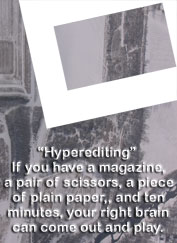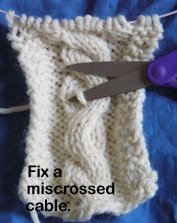.
Wandering on. Having a glance into an exhibit on First Peoples' lifestyles -- this is a way to take dried squash and make it much more transportable! It looks almost like it was knitted! Human ingenuity never ceases to amaze me.
Looking at some geological specimens. I believe all of these things are lava formations, and I'm sure it said the biggest one was a lava formation. I wonder what it squeezed through, to end looking like it was extruded.
Oh my. I don't remember seeing anything remotely like this before. They have sliced through an iron meteorite. Look at the pattern in there! (this was at least 2' from end to end)
It looks to me like the sample above is #18. The descriptive info says "Canyon Diablo, Iron (IA), found 1891 in Coconino Co., Arizona. Recovered weight, > 19,000 kg" Yowza -- more than 19,000 kg??? I wonder how big the whole thing was! And -- how did they go about "recovering" an object that weighed ">19,000 kg" back in 1891! After cutting it up, perhaps? I also want to know how old it is....
Close up. So cool..... I never would have suspected all of this was going on. I've seen iron meteorites in museums before, and as I recall them, they have been a sort of rusty brown, evenly, all over the outside........... No hint of all this silvery complexity inside!
Wandering on. Ordovician Trilobites, from 490-443 million years ago. These are Onnia superba, from Morocco.
I wonder why they are textured as they are. All that stippling in the front. And why those long things projecting backwards.
This is Cybele panderi, from St. Petersburg, Russia. Trilobites everywhere!
This is a Devonian Trilobite, from 417-354 million years ago. Kolihapeltis rabatensis, also from Morocco. Wonder why it needed those long things coming off its head and curving up and back toward its tail.....
Something a little closer to home -- a model of an early mammal. Alas, I failed to capture the info. I thought surely I could find it on the Field Museum's website, but ... no. Their website is surprisingly silent on the issue of objects on display. I mean -- I know that putting all of the data about their collections (or even the contents of current exhibitions) into a db would be an Ordeal, but still. Sheesh.
I googled up something like rat-like early mammal model, and found this one at the Smithsonian, of Morganucodon oelheri. Similar, for sure, to the one by my hand, but apparently much smaller. (I guess I don't know that the model in the Field Museum is life-size....)
As it says on the Smithsonian's site "Only 10 cm (4 in) long, its DNA was passed on to billions of descendants – including you." Easy to take in stride, when we know that we share genes with Earthly bacteria and plants!
Near the critter above, I read a sign that says that in addition to the other things we all know are unique to mammals, we are the only ones who use a diaphragm to breathe, and we are the only ones who have three bones in our middle ears.
I was gobsmacked when I learned in Dino 101 that dinos (LIKE BIRDS) breathed in a completely different way than we do. Who knew?!?!?
It was only when I read it in the Field Museum that I knew that three ear bones (evolved from extra jaw bones that reptiles have) are also unique to us furry critters who feed milk to our babies.
Speaking of dinos, the Field Museum has lots. This one was 6 or 8' long, I think.
I can't say I'm sorry that a close personal encounter with this one (and her/his buddies) is not possible for me...............
Did you know there were once snub-nosed crocodiles? Oh, wait, it's from Madagascar -- lots of unusual things have come from there..........
Of course there is a shop when you leave the dino area. They have some excellent plastic dinos. Scary, though -- when I was first buying plastic dinos, they were a few dollars. Now they are much cooler than they used to be (much, much more detail), and the nice ones are much more expensive. Like $35.
Did you know that you, too, can own a (cast of) a piece of Sue? How cool.
Not something I need to own, but isn't it cool that you, or I, could, if we wanted?!?!
Here are some parts of Sue that are right outside the dino shop.
Gastralia. Who knew. !!!
There's a model (1/3 size) of Sue's head, as you walk away from the dino shop toward the front of the museum. I want it to have better colors, and I really really want to see the feathers! My Dino 101 prof told us that there is clear and compelling evidence that species in the groups that include T. rex had at least some feathers...... !!!! Tantalizing, to be pretty darn sure they were there, but not know where, or what they looked like. (Perhaps "just" for display -- rising up in a crest over their head when they were aroused?)
I've said this is a big museum -- this is looking from near the front of the museum toward the back, through arches, arches, arches...........
See Sue's 1/3 size head, at left, where the guy is coming out of the dino shop? And under the other side of the arch are the cases with Sue's gastralia.
I didn't notice all the decoration on the ceiling until I saw the previous image on "the big screen".....
When we came into the museum, on the 14th, we got a head-on look at Sue, with her portrait above her head (on a second-floor wall). It turns out that the skull, downstairs with the rest of the skeleton, is a cast. The actual fossils of her skull are so heavy that they didn't want to have to think about how to support them in a realistic T. rex pose. So they are up here on the second floor, under the portrait.
Big. Really big. The people behind it are a bit deceiving, for scale. The case is pretty big, too,so those people are farther away than we might think. But Sue's teeth are not the same diameter as that woman's arms.......
This skull is between 3 and 4 feet from nose to back-of-head, I think. Yikes.
In yesterday's post I talked about mammals having three bones in their ears. I believe T. rex had but one.
We are standing very near the case with Sue's skull, looking into the big hall. You can see Sue, and a couple of elephants. The volunteers that had the horns and antlers for us to touch were near the elephants.
.
Subscribe to:
Post Comments (Atom)








































No comments:
Post a Comment